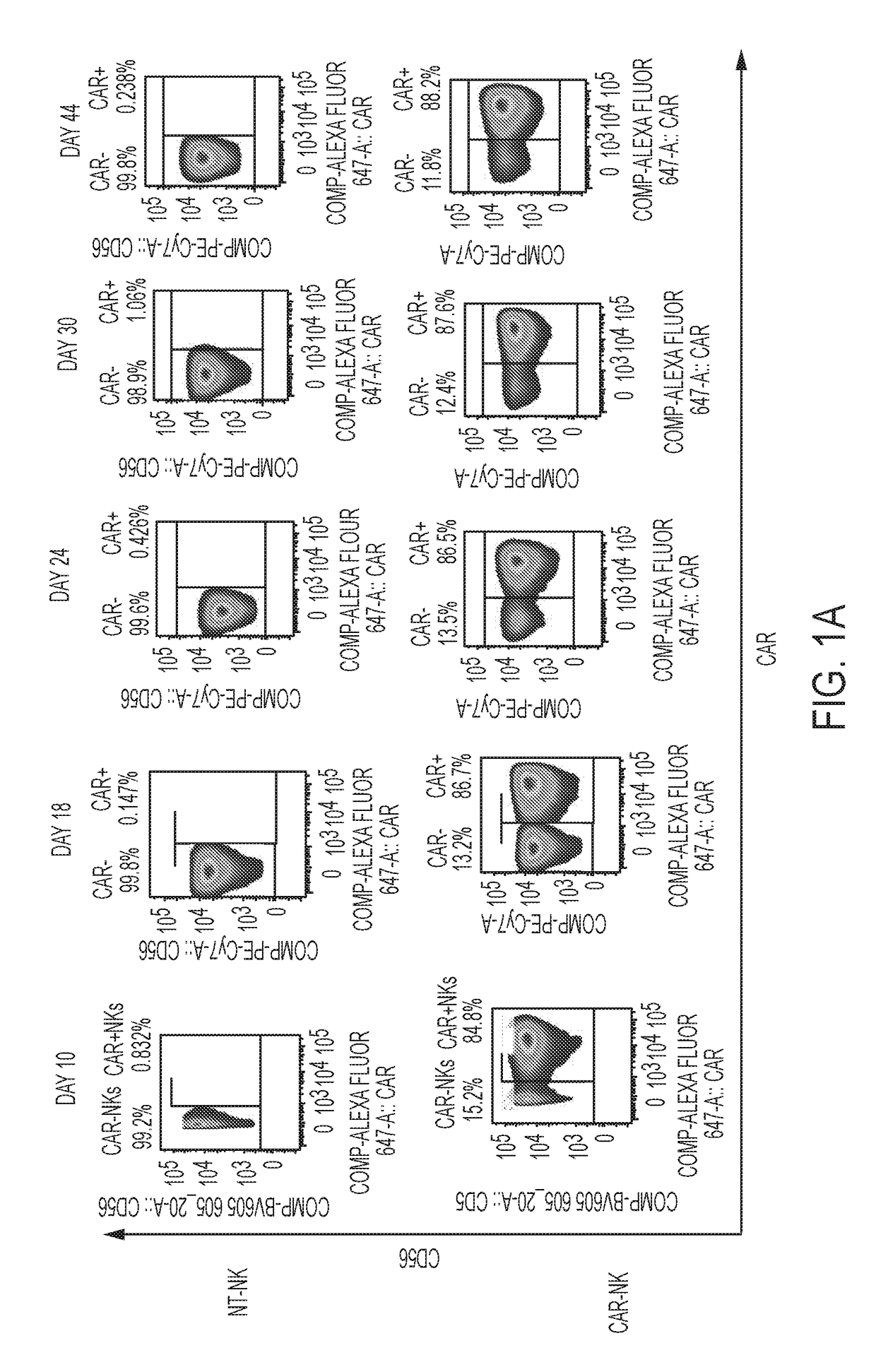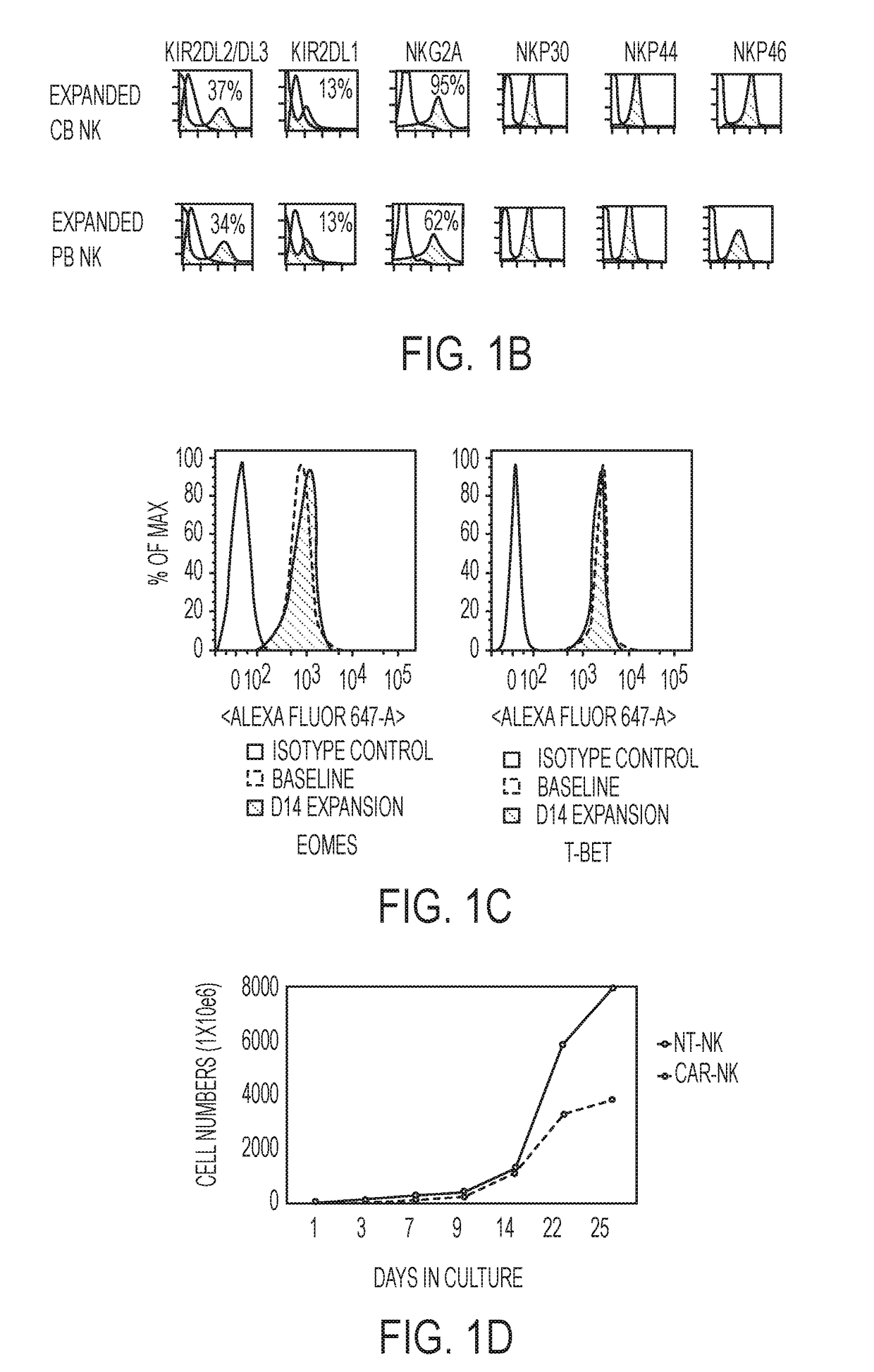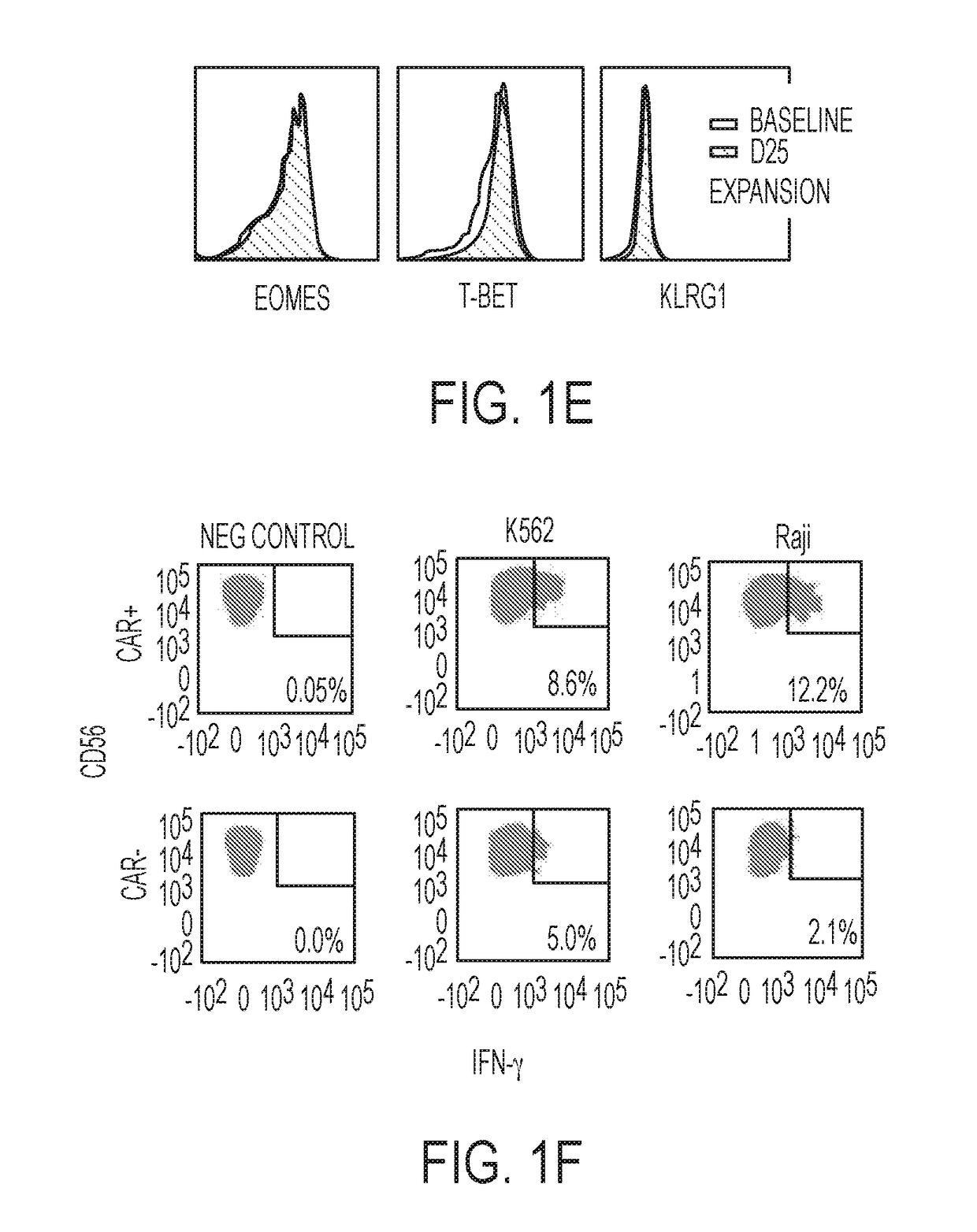Methods of treatment with natural killer cells matched for killer immunoglobulin receptor type
a natural killer cell and immunoglobulin technology, applied in the field of immunotherapy, can solve the problems of unsuitably matching unrelated volunteer donors, delayed hematopoietic recovery, and increased risk of life-threatening infections and disease progression or relaps
- Summary
- Abstract
- Description
- Claims
- Application Information
AI Technical Summary
Benefits of technology
Problems solved by technology
Method used
Image
Examples
example 1
ngineering of Cord Blood-Derived NK Cells
[0100]NK cells were derived from cord blood and their specificity was redirected by genetically engineering them to express tumor-specific chimeric antigen receptors (CARs) that could enhance their anti-tumor activity without increasing the risk of graft-versus-host disease (GVHD), thus providing an ‘off-the-shelf’ source of cells for therapy, such as immunotherapy of CLL. For genetic modification, CB-NK cells were transduced with a retroviral construct (CD19-CD28-zeta-2A-iCasp9-IL15) to redirect their specificity to recognize the tumor antigen CD-19. The transduction efficiency of the CB-NK cells transduced with the retroviral vector was monitored over 44 days and transgene expression was found to be stable (FIG. 1A). The CB-NK cells displayed a mature array of activating and inhibitory receptors (FIG. 1B) and did not undergo exhaustion (FIG. 1E). Also, the CB-NK cells expanded by aAPCs maintained an Eomeshi and T-bethi phenotype (FIG. 1C) a...
example 2
valuation of Cord Blood-Derived NK Cells
[0102]To determine the anti-leukemic effect of the CAR-transduced NK cells, they were infused into a “humanized” mouse model of lymphoblastic leukemia, the luciferase-expressing Raji NSG mouse model. To monitor the trafficking of CAR-CD19+ CB-NK cells to tumor sites in vivo, the cells were labeled with the FFLuc vector, enabling monitoring by bioluminescence imaging. Engrafted mice received CD19+ Raji leukemic B cells (2×106) injected intravenously and labeled with the RLuc vector to monitor tumor growth. Six to 10 days after tumor engraftment, mice were infused intravenously with 2×107 expanded CB-NK cells that were unmodified or expressed transgenic CD19 / CD28 or IL-15 alone as controls, or CAR19-CD28-zeta-2A-IL15 CB-NK cells labeled with FFLuc. All imaging was performed once a week for 3 weeks. Four groups of animals (n=10 per group) were studied, and the spleens, blood and lymph nodes of the mice were collected after they were euthanized. T...
example 3
HLA-C Genotypes Associated with Distinct Outcomes in Patients Undergoing CBT
[0104]Patients were classified according to the presence of genes encoding recipient HLA-C ligands for donor inhibitory KIRs. Table 2 summarizes the HLA-C group 1 (C1) and group 2 (C2)-related alleles. The 24 patients who were HLA-C2 homozygous had a significantly higher risk of relapse and a worse OS than the 31 patients with HLA-C1 / C1 or the 55 patients with HLA-C1 / C2 genotypes (Table 1A and FIG. 3), regardless of whether the underlying malignancy was of myeloid or lymphoid origin (Table 3). These findings were validated in an independent cohort of 94 CBT patients (Table 1B).
TABLE 1Patient characteristics and outcomes in the discovery (n = 110) and validation (n = 94) cohorts.A. Discovery cohort1-year relapse rate1-year overall survivalCumulativeProbabilityHR (95% CI)incidenceHR (95% CI)n(%)(risk of death)(%)(risk of relapse)AgeIp = 0.08p = 0.74≤40 yr5952.4132.71 >40 yr5135.61.57(0.94-2.63)36.01.12(0.56-2....
PUM
| Property | Measurement | Unit |
|---|---|---|
| Fraction | aaaaa | aaaaa |
| Fraction | aaaaa | aaaaa |
| Fraction | aaaaa | aaaaa |
Abstract
Description
Claims
Application Information
 Login to View More
Login to View More - R&D
- Intellectual Property
- Life Sciences
- Materials
- Tech Scout
- Unparalleled Data Quality
- Higher Quality Content
- 60% Fewer Hallucinations
Browse by: Latest US Patents, China's latest patents, Technical Efficacy Thesaurus, Application Domain, Technology Topic, Popular Technical Reports.
© 2025 PatSnap. All rights reserved.Legal|Privacy policy|Modern Slavery Act Transparency Statement|Sitemap|About US| Contact US: help@patsnap.com



